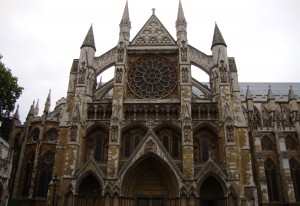I believe Brandon and I have won the award for worst bird poop incident. Not only did we have bird poop on us the entire day, it was like freaking Niagara Falls bird poop, splattered everywhere….. and my sweater is dry clean only.. stupid bird.
When I first sat down to write this post, I thought my views on identity were simple. Simple meaning; you are who you are, don’t throw a fit, its easy, kind of simple. After I realized I had virtually nothing to write about, I figured I needed more time to allow myself to further my knowledge on what identity is.
This time around, after viewing what I though may help my argument, (the Sikh and Hindu Temples), I have gained some understanding of what identity is. It is apparent that, the search for and loss of identity reflects entire generations in the city of London. The book Salam Brick Lane is a perfect example of the diverse population attempting to search for a British identity while also trying to grasp their own at the same time.
It seems as though Londoners want immigrants to assimilate into their culture. Does this mean, then that once a man from India, of darker complexion, who works in the city, goes to fun pubs at night, and lives in an upscale neighborhood, in other words “assimilated”, can only identify now with British culture? For that matter, if one does do these things, is he/she unable to identify with their original culture?
The two temples we saw represent how immigrant populations have migrated to an area where they can openly worship a religion brought from another country. In these temples we saw people who practice a very strict form of both Hinduism and Sikhism but we also saw those who dare to use the term, “more westernized”. We see these people worshiping in street clothing and we know it is their choice, but how do they feel? Do they feel trapped within one culture, or do they feel as though they want both?
I guess what I am trying to argue is that identity can not be defined by another person. As a matter of fact, identity can just as easily never be defined. It is ones choice to have an identity and it is also their choice to not. The real issue involves the ways in which a country handles an immigrant populations decision to choose their identities meaning, they have to allow each individual to make the decision.
I am an America. I descend from Germany, Ireland, Scotland, and England, but me, myself, and I, am an America. But, if I ever choose to move to England or another country, I would hope that my identity would be at liberty to alternation based on who I want to be and who I choose to identify with.
Tags: Patsy
August 30th, 2009 · 1 Comment

Westminster Abbey
Yesterday, I stood on Charles Darwin’s grave. And no, it was not in a cemetery or science sanctuary, it was in a church. Over 3,000 people are buried at Westminster Abbey. While it is mainly dominated by various royal figures, there are several burials and memorials for literary figures, scientists, and even an unknown soldier. But by far the most shocking person buried there is Charles Darwin. Despite the fact that in many ways his work refutes the teachings of the church, he is still honored there as an important historical figure. This illustrates the importance of English history to the English, to the point where they would rather honor a historical figure who they disgraced with than have his part of history lost.
As an English major, there was also another part of the church I particularly liked: poet’s corner. There I saw stones for many writers including D. H. Lawrence, Lewis Carroll, and Dylan Thomas. However, I was disappointed to realize that not everyone who had a stone on the ground was really buried there. I later learned that these stones served mainly as memorials to recognize these artists’ efforts. One the bright side, I did stand on Charles Dickens, who is actually buried in the church next to Rudyard Kipling.
All these sanctuaries, memorials, and graves, some with carving or detailed sculptures of the deceased present set me thinking about death rituals. The more we looked at these secularized burial spots , the more they began to resemble the Egyptian burial traditions. My knowledge of their practices is limited, but to my understand the Egyptians bury their dead in elaborate tombs with gold and riches to prepare them for the afterlife. And I looked at the extravagant sculpture of Queen Elizabeth lying about her body I began to wonder what the purpose of this whole thing was. Who was really being honored here? Queen Elizabeth? The artist? The patron or surviving family members? Or even the church itself?
And amongst these thoughts, as I walked the tours, the announcement came on for a moment of prayer, it was 11:00. And out of these thoughts of vain royalty, religious celebrations, or tourist attractions, I was reminded that we were in a place of worship, a house of God. And these people were lying here to be with God and to be remembered. These ornate carving and statues were not meant to honor the person, to prepare them for the afterlife, or even to make Westminster Abbey the tourist attraction that it is today; they were made to honor England’s history. Everyday people visit Westminster Abbey and they worship this country’s history.
To view a slideshow of photos from my time at Westminster Abbey, The National Gallery, and the South Bank please click here.
Tags: Churches and Cathedrals · Megan

